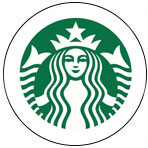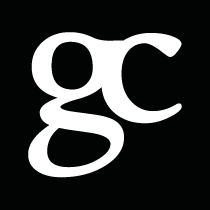
Starbucks has a fundamental business tenet that we are creating a welcoming place for all people, and that means inclusion and diversity is critical to our success. We provide inclusion training and tools to people managers to ensure that we are preparing all leaders to foster a diverse and inclusive culture based on merit, and we provide diversity education for retail partners.
In 2015, we set a goal to increase the female and minority representation of our senior leadership (approximately 50-60 senior vice presidents and upwards) by 50%. We achieved that goal for women in 2018 and, by the end of 2020, we aspire to have 50% women at the senior leadership level and to achieve our goal of increasing minority representation by 50% over our 2015 number.
For two years in a row, we have achieved pay equity for men and women and all races performing similar work in the United States. We also have verified gender equity in pay in China and in Canada.
We have focused very much on youth as well – we partner with community-based youth organizations and educational institutions to try to advance the cause of 16-to-24-year-olds who are not in school or who are not working. We are engaged in our communities in a number of ways. For example, in March, Starbucks hosted a town hall during the National Organization of Black Law Enforcement Executives’ “NOBLE” CEO Symposium held in Houston. The town hall was designed to explore bias in public accommodation with law enforcement organizations, and to discuss the proper use of emergency services in order to mitigate discrimination.
We have a law and corporate affairs diversity and inclusion committee, which has the goal of fostering inclusion and diversity in the global legal profession, and we seek to influence our partners, other businesses with whom we interact – for example, external counsel – and other professionals to inspire, attract and retain diverse talent within the legal community.
We are focused on a few different sets of activities. We support organizations that promote inclusion and diversity in the legal profession. We conduct an annual survey of our top 25 external law firms with whom we have the greatest legal spend, and based on the survey results, we do an annual recognition and award for the external law firm that has demonstrated the most commitment to inclusion and diversity within the legal community, and also the community in which they operate.
We undertake a series of pipeline programs developing diverse professionals. One of these is the Gregoire Fellowship, which guarantees students summer fellowships at local law firms and in-house legal departments, a mentoring relationship with former Governor Christine Gregoire [and also the former Attorney General of Washington], and help studying for the bar exam. Fellows also receive University of Washington scholarships to help defray tuition cost. Starbucks is a founding partner of this program, which began in 2015 and, additionally, each summer supports an incoming 1L at UW Law for a five-week paid internship at Starbucks. We also have a mentorship program matching a Starbucks attorney with a diverse attorney in their first five years of practice. We recruit for open attorney positions through affinity bar associations, diversity fellowship programs such Leadership Council on Legal Diversity (LCLD), and our own diverse networks.
We support the involvement of our legal and corporate affairs partners in affinity bar organizations, and we participate in both in-house and outside counsel fellowship programs, such as the LCLD Fellows Program, which offers development opportunities that include networking, mentoring and leadership training.
We very much feel like our legal department is part of the social and business fabric of Starbucks, and I think legal departments have an excellent opportunity to lead in this space. First of all, the legal profession deserves – and, I think, requires – some additional thought and investment, not only by internal law departments, but also by external law firms, by the government, and by many other sources. We have an opportunity to be at the table when issues arise, or when we are deeply involved in the expression of our brand.
One of the interesting things about our department is that we have expanded our efforts beyond just the legal profession. Our department also consists of corporate affairs, which includes legal operations, global security, ethics and compliance and global privacy, and so when we talk about our inclusion and diversity initiatives, we look at the legal profession and beyond, to try to create best-in-class programs and initiatives that couple with the enterprise-wide goal of creating a welcoming environment.
Starbucks is very transparent about its efforts in the inclusion and diversity space and about our statistics. If you look at our website, you will see a wealth of statistics on the diversity of our partners, and we also seek that information within the legal team, so that we can be as engaged as we would want our law firms to be relative to quantitative and also qualitative programming to advance the cause.
We recently published a civil rights assessment report that was conducted by Covington & Burling under the leadership of former Attorney General Eric Holder, who helped us to better learn about our own practices and policies and how we could further advance our commitment to creating a culture of belonging and welcoming for our customers, partners and also for the communities in which we serve. In looking at that report and applying some of those learnings, we are going through a process of ‘learn and adapt’.
So, within the legal profession, we are embracing, for example, the notion that when we select outside counsel, we look at inclusion, diversity, equity and accessibility. We look at them both in quantitative and qualitative measures. We will look at numbers – attorneys, paralegals, who’s an equity partner, who’s an income partner, and so on – and that’s quite important to us. We will look at data that pertains not only to women and racial minorities, but veteran status, people who are openly LGBTQ and people with disabilities.
But the qualitative aspects are also important to us, even if it doesn’t turn up within the law firm’s own internal statistics. So, for example, what are the programs, development initiatives, training, the resources that are made available to attract and to retain and promote diverse talent within that law firm? Is that law firm doing something above and beyond to build the pipeline of diverse talent within law schools? What kind of community outreach efforts might they have? What kind of mentorship efforts might they have, even if they go beyond the four walls of that law firm? We will ask very broad questions about how our firms are strengthening their bench and their talent pool within the legal community more generally, to get under the surface and analyze beyond just what the numbers might say.
What matters to us is whether the firm can demonstrate actual results, for example, improved recruitment and retention of women and minorities, promotions to partnership and expansion of D&I programs. We request that firms staff our matters with a diverse panel of lawyers, that a lawyer from a diverse background serves as the lead or relationship lawyer assigned to the matter, and that diverse lawyers receive origination or other credit.
There’s always going to be more to be done in the future. We’re re-evaluating and stepping back to look at some of our current formulas. For a number of years, we had been utilizing a unique law firm survey, but we’re pivoting back to the ABA model diversity survey because of the importance, we think, of continuity of data and information across the legal profession. I will sign off on new legal service providers to whom we are giving new business, and one of the criteria is inclusion and diversity.
We’ve signed a GC pledge committing to ABA Resolution 113, about promoting diversity in the legal profession. We also try to get into this issue through our legal operations team, and we have partners who are actively involved in CLOC [Corporate Legal Operations Consortium], which is focused on optimizing and creating industry standards for the legal ecosystem – and that includes diversity and inclusion best practices. We’re collaborating within CLOC to try to develop a diversity and inclusion framework.
There is no such thing as the silver bullet solution – this is a very complex and longstanding issue, so our general approach is to try to learn what we can and then share our learnings with others. We try to open source as much information as we can; for example when we undertook unconscious bias training, we made that training public because we wanted others to benefit from the investment we had made and to think about how it might benefit the retail community, or society, more generally.


